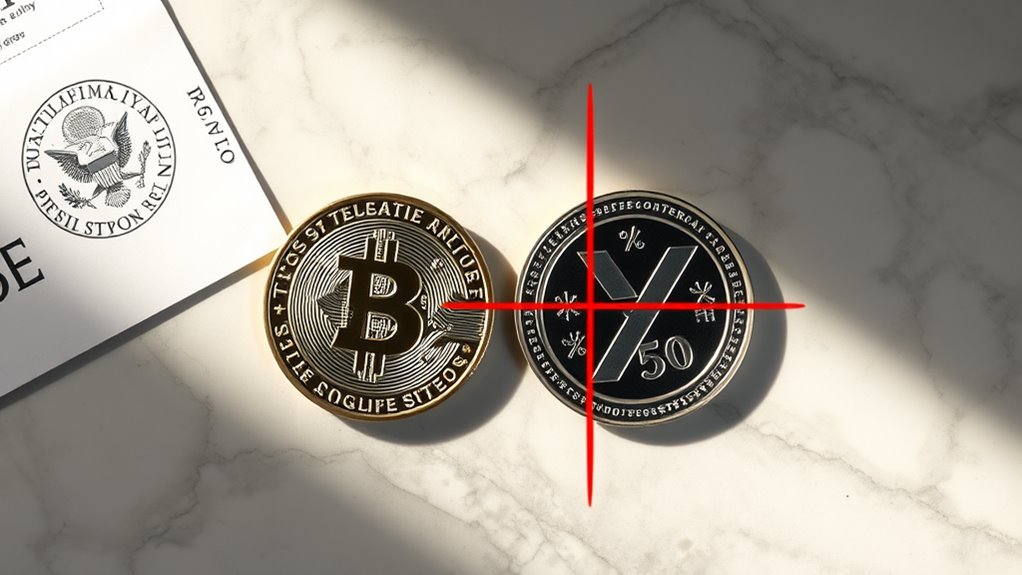Stablecoins Escape SEC’s Securities Net, but Yield-Bearing Tokens Remain in Crosshairs
Note: This post may contain affiliate links, and we may earn a commission (with No additional cost for you) if you purchase via our link. See our disclosure for more info. The gold and crypto world is constantly changing. This is not financial, investment, legal, or professional advice. So, please verify the information on the gold and cryptocurrency provider’s websites.

While the crypto market fluctuates wildly with each tweet from tech billionaires, stablecoins have carved out their niche as the boring-but-essential backbone of digital finance. Recent SEC guidance has delivered a rare bit of good news: “covered stablecoins” won't be classified as securities.
Translation? If your coin is pegged to USD and backed by actual reserves, you're in the clear. No expensive SEC registration hoops to jump through.
Stablecoins backed by real dollars just dodged the SEC's regulatory bullet. Financial freedom without the paperwork headache.
This is massive for industry giants like Tether (USDT) and USD Coin (USDC). Together they account for a whopping $200 billion in market supply. They're officially “covered” now. Boring has never been so profitable.
The SEC's stance focuses specifically on stablecoins that are easily redeemable and backed by reserves. It's like they're saying, “If it works like cash and smells like cash, we'll treat it like cash.” Revolutionary concept, right?
Meanwhile, lawmakers are scrambling to create clearer frameworks for these digital dollars. The House Financial Services Committee has advanced the STABLE bill which aims to establish reserve and capital requirements for stablecoin issuers. These assets facilitate global financial inclusion by providing stable value storage and transfer capabilities to unbanked populations worldwide.
But don't pop the champagne just yet. While stablecoins dodge the securities bullet, yield-bearing tokens remain firmly in the SEC's crosshairs. These tokens—promising returns through staking, lending, or other mechanisms—tick all the boxes of investment contracts.
The SEC's message couldn't be clearer: promise passive income, face securities regulation.
The distinction is simple. Stablecoins aim for price stability, working as transactional tools. Yield-bearers focus on generating returns, functioning as investment vehicles. One's a digital dollar; the other's a digital dividend machine.
For yield token issuers, the compliance challenges are real. Unregistered offerings risk enforcement actions. SEC cases like the one against Ripple serve as cautionary tales.
The regulatory burden is heavy: audits, disclosures, reporting obligations.
This bifurcated approach might actually boost stablecoin adoption. Clear rules reduce uncertainty. Meanwhile, yield token innovation faces tougher hurdles.
As U.S. standards take shape, they could influence global regulations. The crypto world finally has some clarity—just not the kind everyone wanted.












